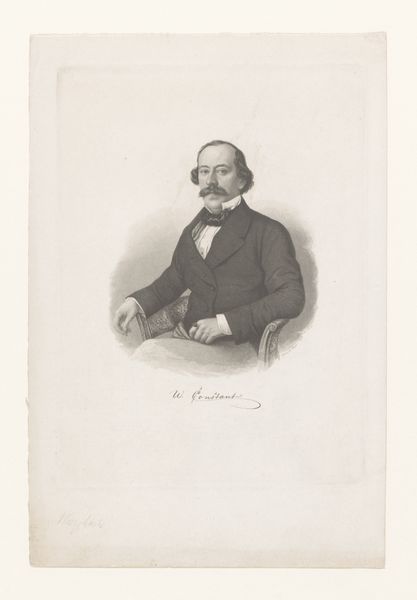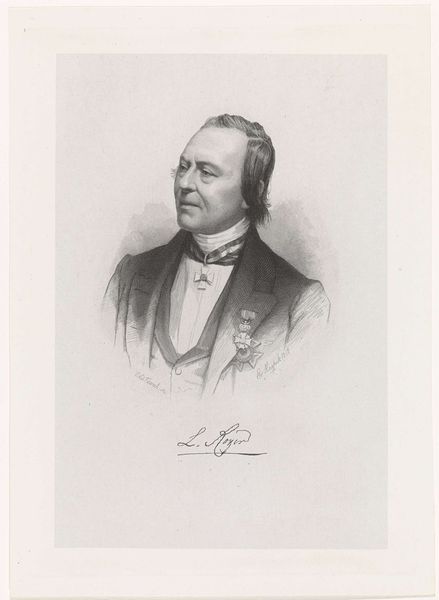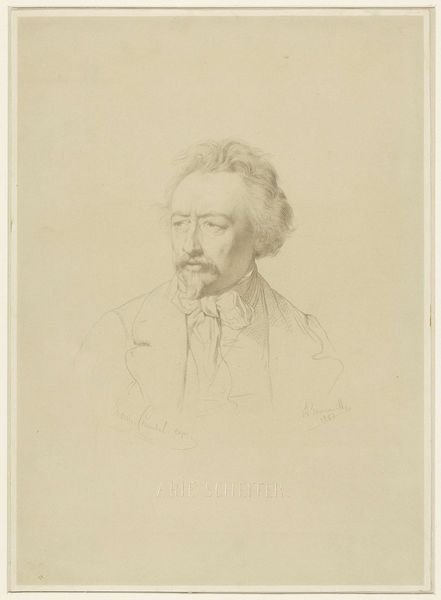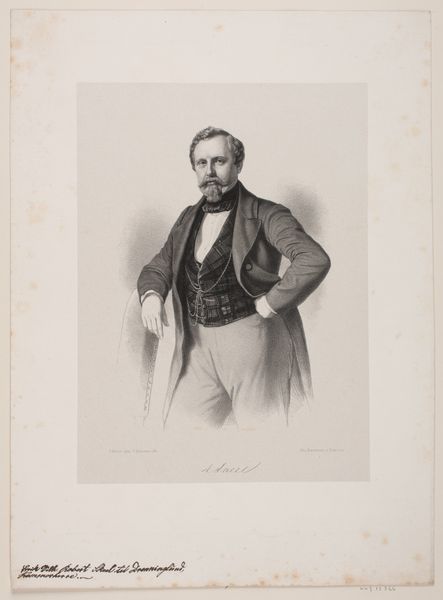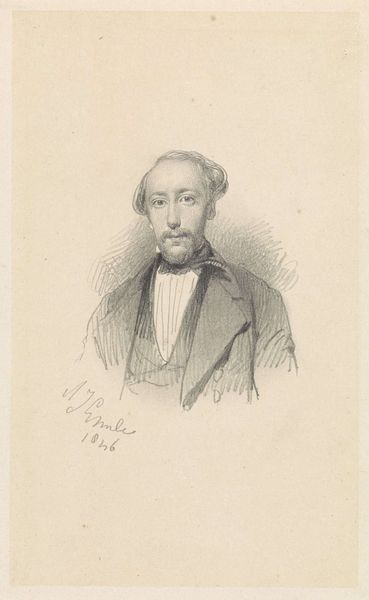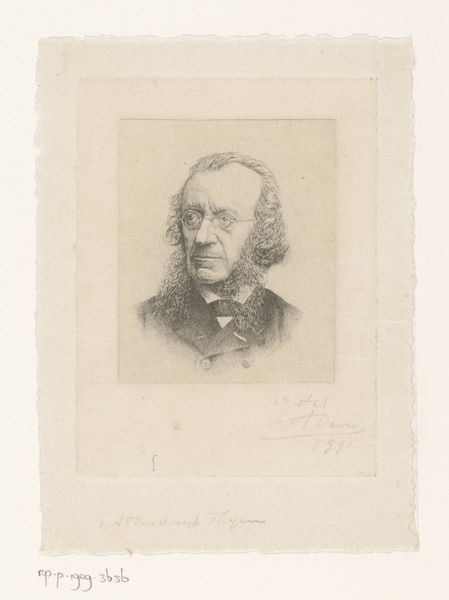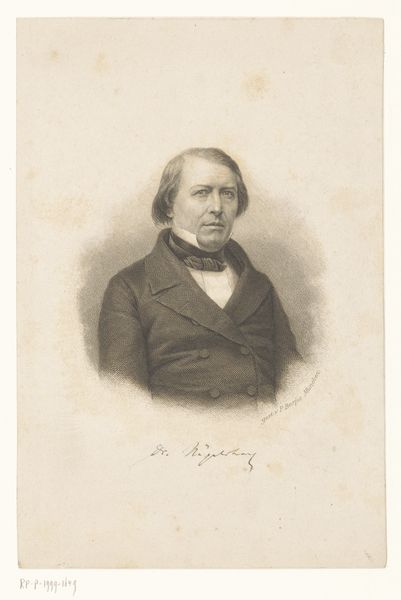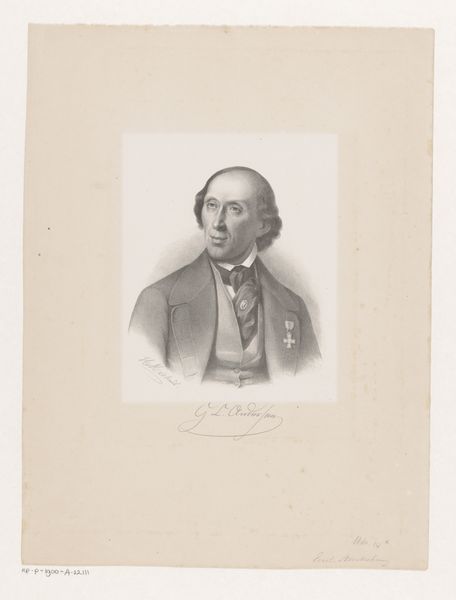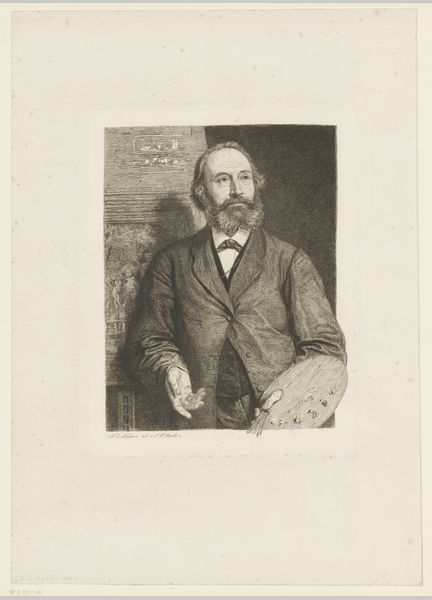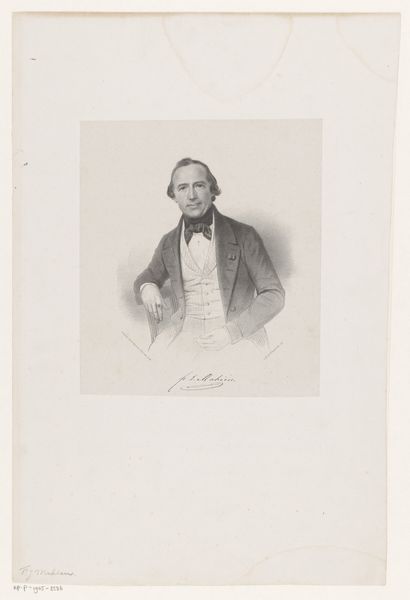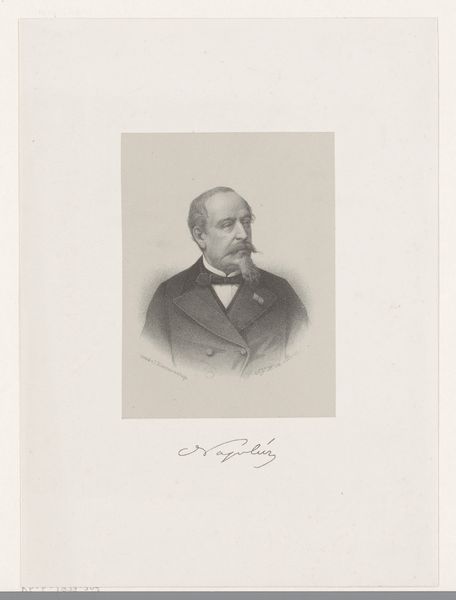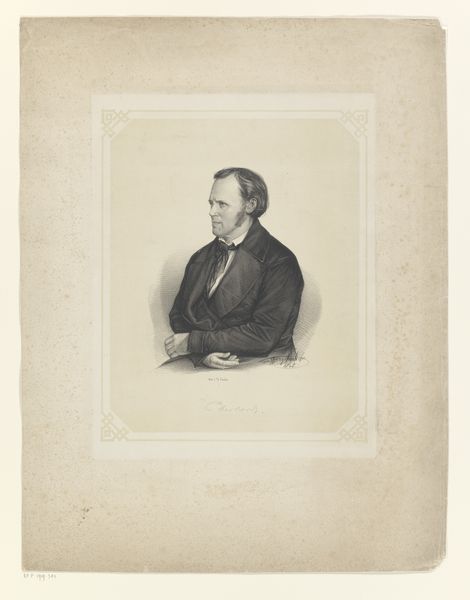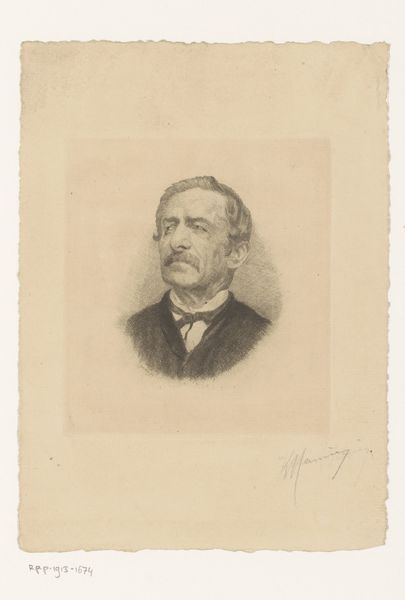
drawing, pencil
#
portrait
#
pencil drawn
#
drawing
#
pencil sketch
#
caricature
#
pencil drawing
#
pencil
#
portrait drawing
#
realism
Dimensions: height 286 mm, width 243 mm, height 214 mm, width 186 mm
Copyright: Rijks Museum: Open Domain
Editor: Here we have Thérèse Schwartze’s "Portret van Johann Georg Schwartze," created before 1903, and residing here at the Rijksmuseum. The soft graphite gives it such a delicate, almost melancholic feel. What strikes you most about it? Curator: It's interesting to consider this drawing within the context of the late 19th century, a period heavily influenced by both the rise of photography and an increasing focus on psychological realism in art. Schwartze, known for her society portraits, was deeply embedded within the cultural elite. Do you think this sketch reflects her understanding of the power dynamics at play in portraiture at the time? Editor: That's fascinating! I hadn't really thought about it like that. I guess I was just seeing a straightforward portrait, but what you're saying makes me think about the performance of identity within these social circles. Curator: Precisely. Consider how portraits were often commissioned as displays of status and character. Even in this more informal drawing, the subject’s pose and attire contribute to that image. We also see Schwartze, the artist, engaging in a form of social commentary simply by choosing her brother as her subject. How might that connection influence its interpretation by viewers then, or even us today? Editor: I see what you mean. It challenges the typical patron-artist relationship. This adds a layer of intimacy and perhaps even challenges the rigid social expectations through portraiture. Curator: Exactly. The art becomes not just a likeness, but a complex negotiation of family ties, social roles, and artistic expression within a specific cultural landscape. It goes beyond simple representation. Editor: Wow, that's really changed how I see this portrait. I initially just saw it as a skillful drawing, but now I understand its historical and social significance much better. Thanks! Curator: My pleasure. It’s these historical undercurrents that truly bring art to life for me.
Comments
No comments
Be the first to comment and join the conversation on the ultimate creative platform.
